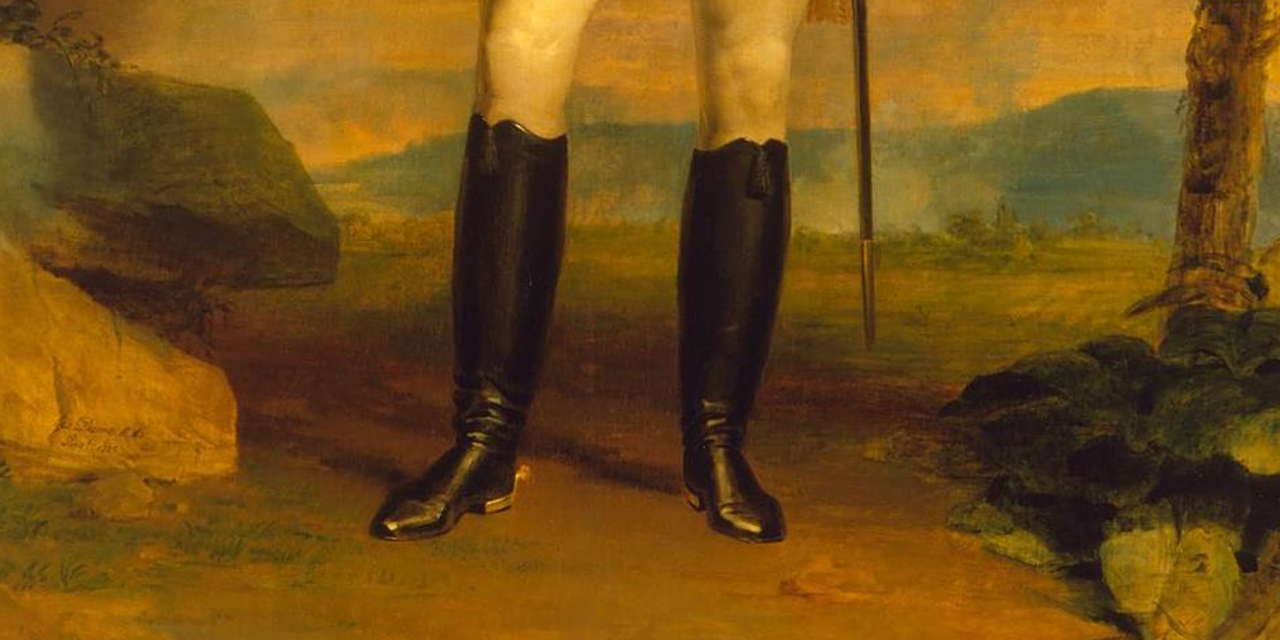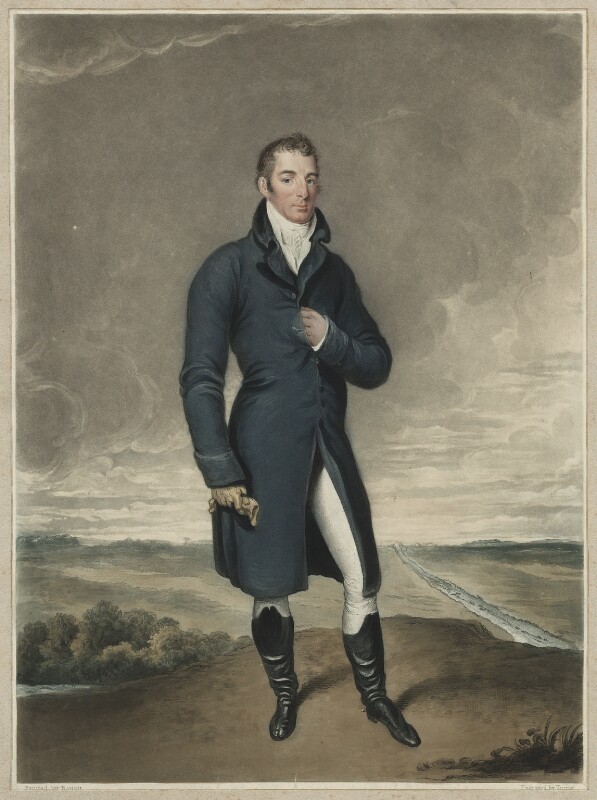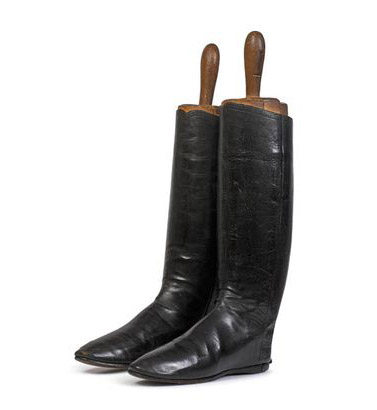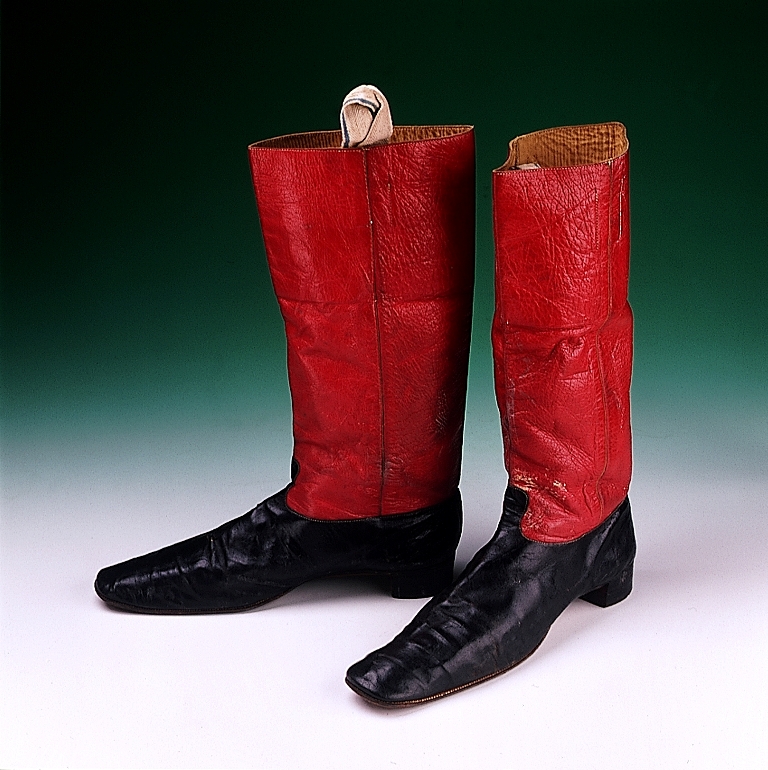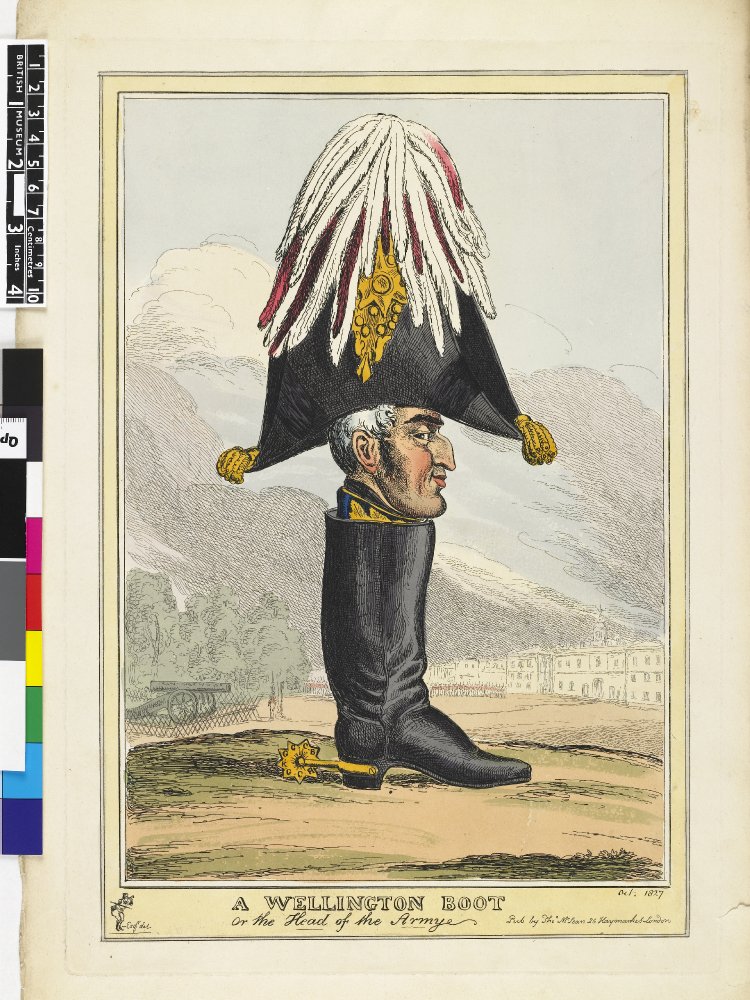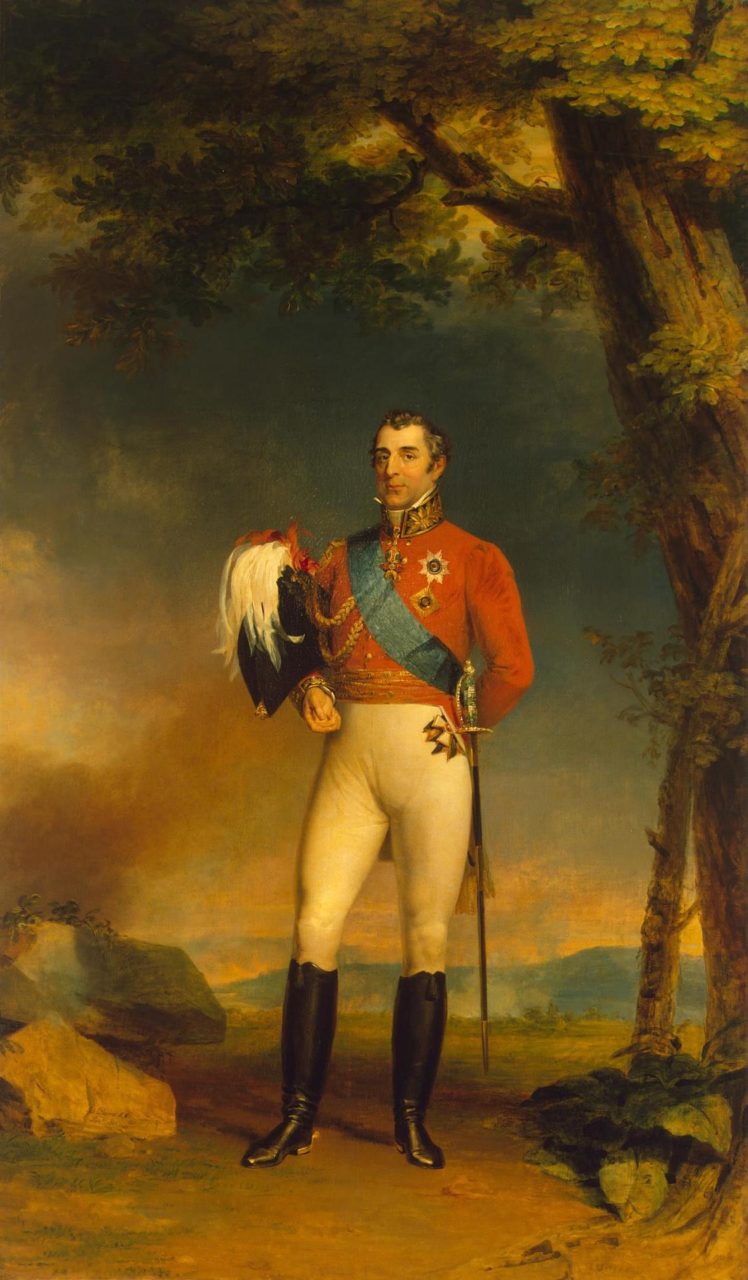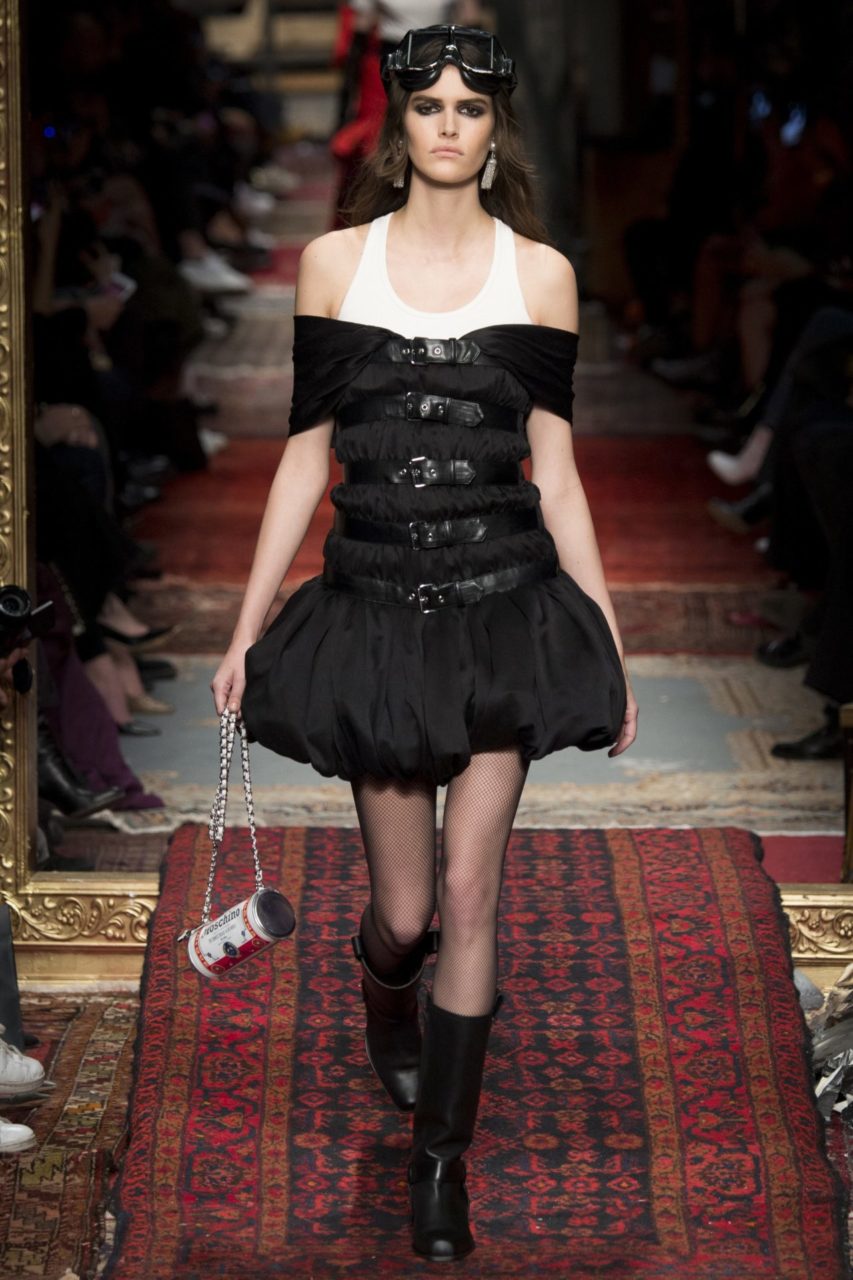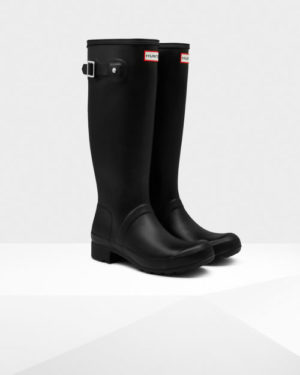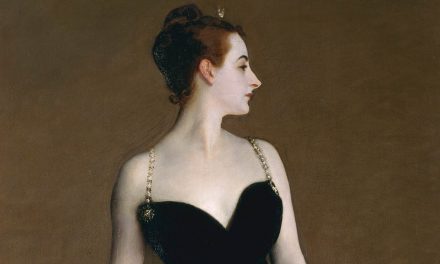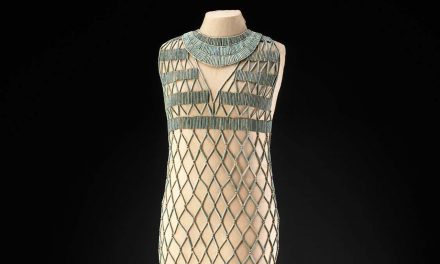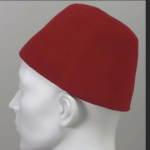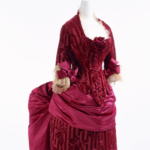A popular and practical knee- or calf-length boot worn in the 19th century.
The Details
The Fairchild Books Dictionary of Fashion (2013) defines the Wellington boot as a:
“calf-length or below-the-knee boot with a seam below ankle making it look like a top has been joined to a men’s low shoes with a long, tongue-like projectionist vamp. Seams also extend down the sides of the boot to the ankle with boot loops at the top. Usually water repellent leather with oak-tanned soles and rubber heels, sometimes leathered lined. Named for Duke of Wellington, British military hero who defeated Napoleon in the battle of Waterloo in 1815.” (166)
Bill Stevern in If the Shoe Fits (1964) records an amusing exchange between Queen Victoria and the victorious Duke: “When Queen Victoria once asked Wellington what kind of boots he wore, the famous general replied, ‘People call them Wellingtons” (118-119).
Fig. 1 - Juan Bauzil & Charles Turner (1766-1820, 1773-1857). Arthur Wellesley, 1st Duke of Wellington, 1817. Hand-coloured mezzotint; 33.8 x 25 cm (13.25 x 9.875 in). London: National Portrait Gallery, NPG D37592. Source: National Portrait Gallery
Fig. 2 - Maker unknown. Pair of Wellington Boots, 1815. Leather. London: National Army Museum, 1999-06-127. Source: National Army Museum
Fig. 3 - Maker unknown. Black and Red Wellington Boots, 1860. Patent and morocco leather. Northampton: The Northampton Shoe Museum. Source: The Northampton Shoe Museum
Fig. 4 - William Heath (British, 1795-1840). A Wellington Boot or the Head of the Army, 1827. Etching, coloured by hand; 37.6 x 26.1 cm. London: The British Museum, 1868,0808.8822. Estate of Edward Hawkins. Source: The British Museum
Fig. 5 - Maker unknown. Pair of Man's dress Wellington Boots, 1845. Leather; 36.2 x 25.4 cm (14.25 x 10 in). Los Angeles: The Los Angeles County Museum of Art, M.67.8.139a-b. Mrs. Alice F. Schott Bequest. Source: LACMA
In Shoes (2014), Rebecca Shawcross includes more shoe-related quotations from Wellington:
“it was named after the military commander Arthur Wellesley, who became the First Duke of Wellington. Most famously known for the Battle at Waterloo, 1815…. Wellington, when asked the most important part of a soldier’s equipment, replied ‘firstly, a pair of good shoes, second a pair of good shoes, and thirdly a pair of half-soles.” (94)
Wikipedia gives the history of the boot first starting off as Hessian boots and goes into further details of the change to Wellington boots: “The Wellington boot is a type of boot based upon leather Hessian boots… This novel “Wellington” boot became a staple of hunting and outdoor wear for the British aristocracy in the early 19th century.”
As June Swann explains in Shoe (1984), in the 1830s India rubber was introduced as a material, with a quote from the period: “A very pleasant gentleman-one of the precise and tidy short as puts their feet in little India-rubber fire-buckets when it’s wet weather” (41).
Fig. 6 - George Dawe (English, 1781-1829). Portrait of Duke of Wellington (1769-1852), 1829. Oil on canvas; 317 x 185 cm. St. Petersburg: The State Hermitage Museum. Source: Hermitage
Its Afterlife
In Fall 2016, Moschino’s ready-to-wear (Fig. 7) shows strong inspiration from 19th-century boot styles. Today the Wellington style has become an everyday boot preference outside of runway life (Fig. 8).
Fig. 7 - Moschino. Ready-to-Wear, Fall 2016. Photo: Yannis Vlamos. Source: Vogue
Fig. 8 - Hunter. Original Tour Rain Boots, Fall 2017. Rubber. Source: Hunter Boots Ltd.
References:
- Severn, Bill. If the Shoe Fits. New York: McKay, 1964. http://www.worldcat.org/oclc/963478185.
- Shawcross, Rebecca. Shoes: An Illustrated History. London: Bloomsbury, 2014. http://www.worldcat.org/oclc/890162083.
- Swann, June. Shoes. Costume Accessories Series. London: Batsford , 1982. http://www.worldcat.org/oclc/11106115.
- Tortora, Phyllis G., Sandra J. Keiser, and Bina Abling. The Fairchild Books Dictionary of Fashion. 4th edition. New York: Fairchild Books, an imprint of Bloomsbury Publishing Inc, 2014. http://www.worldcat.org/oclc/900349357.
- “Wellington Boot.” Wikipedia, September 18, 2017. https://en.wikipedia.org/w/index.php?title=Wellington_boot&oldid=801176023.

